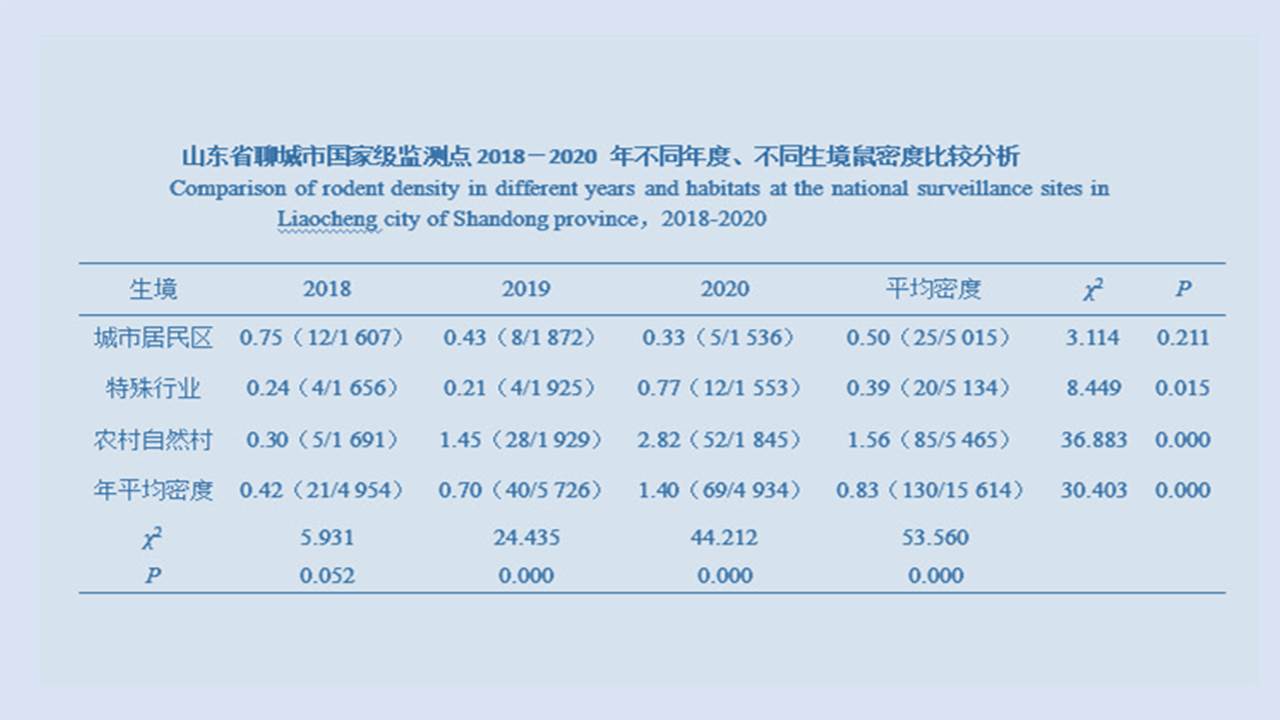 PDF(561 KB)
PDF(561 KB)


山东省聊城市国家级监测点2018-2020年鼠类监测结果分析
闫青芳, 赵洪林, 姜健康, 杜桂英, 刘淑霞, 宁吉沪, 陈立勇, 王光伟
中国媒介生物学及控制杂志 ›› 2022, Vol. 33 ›› Issue (1) : 100-103.
 PDF(561 KB)
PDF(561 KB)
 PDF(561 KB)
PDF(561 KB)
山东省聊城市国家级监测点2018-2020年鼠类监测结果分析
 ({{custom_author.role_cn}}), {{javascript:window.custom_author_cn_index++;}}
({{custom_author.role_cn}}), {{javascript:window.custom_author_cn_index++;}}Rodent surveillance results of national surveillance sites in Liaocheng city of Shandong province, China, 2018-2020
 ({{custom_author.role_en}}), {{javascript:window.custom_author_en_index++;}}
({{custom_author.role_en}}), {{javascript:window.custom_author_en_index++;}}
| {{custom_ref.label}} |
{{custom_citation.content}}
{{custom_citation.annotation}}
|
/
| 〈 |
|
〉 |